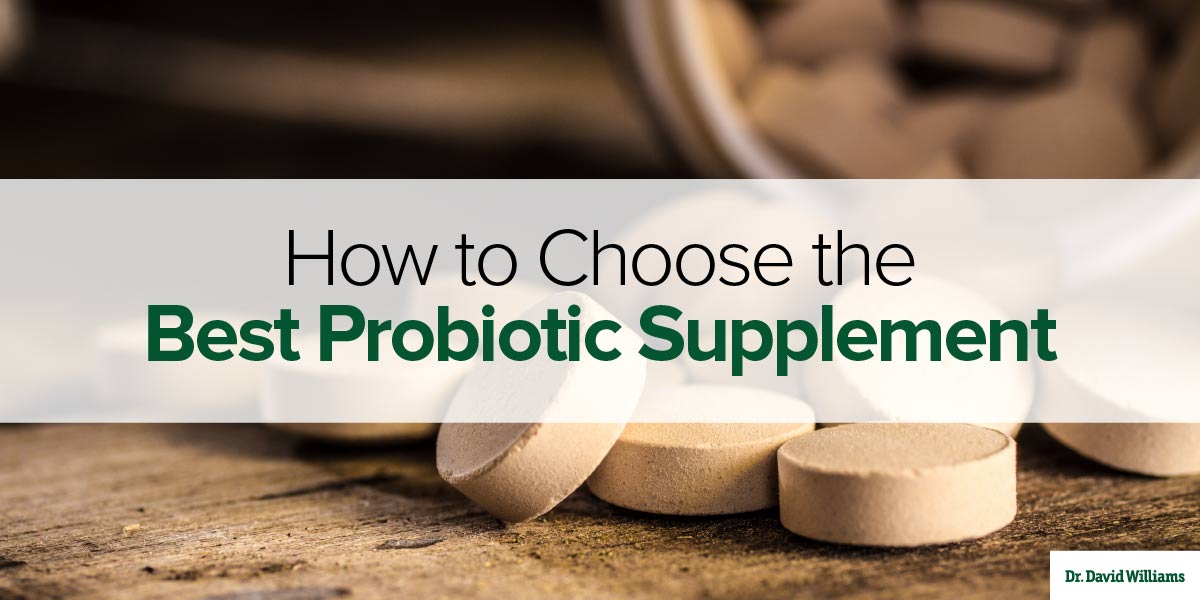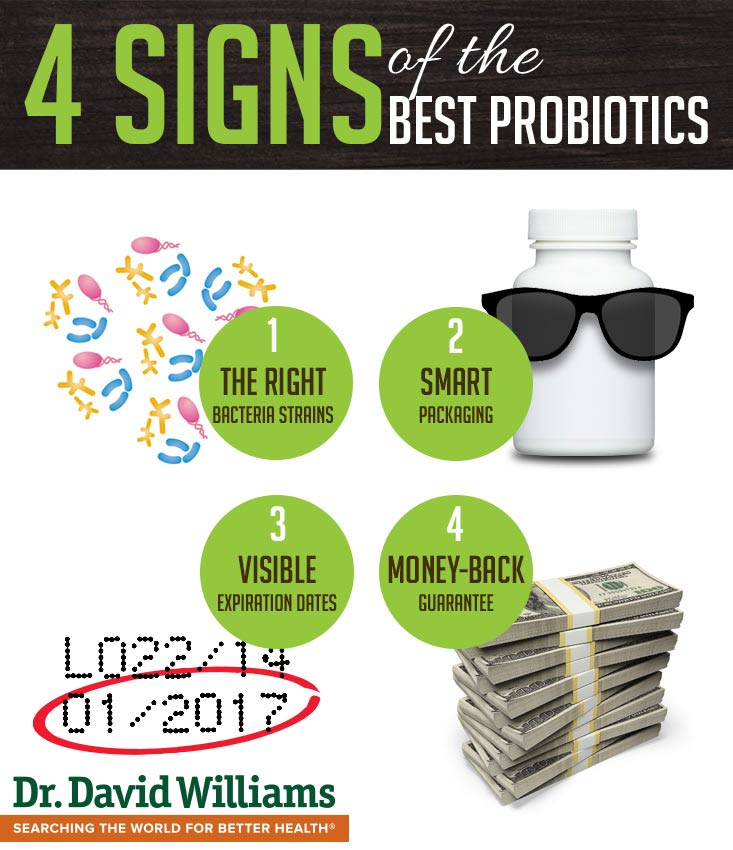
The best way to support digestive health is to add more probiotic foods such as yogurt, sauerkraut, and kefir to your daily diet. If you can’t eat those foods every day—or don’t care for their taste—then your next best option is to take a probiotic supplement. But with a growing number of probiotic products on the market today, how do you know how to choose the right probiotic supplement?
There are a few basic criteria I recommend using to evaluate probiotic supplements:
- The specific probiotic strains included
- The product’s packaging and delivery system
- Product expiration dates
- Money-back guarantee
Let's look at each of these in a little more detail...
Probiotic Strains
Many retailers would have you believe that the right probiotic supplement will have the most bacteria (typically measured in colony-forming units, or CFUs).
However, the truth is that science doesn’t know yet if more bacteria are actually better for you. In fact, we still don’t even know for sure how many different strains of probiotic bacteria are in the gut to begin with. So sales pitches that say more is better are just that—sales pitches.
It’s not the total number of bacteria in a product that is most important; it’s the number of different strains of bacteria it includes.
All the various strains of probiotic bacteria have different functions in the body, yet they work synergistically to influence our health. For that reason, probiotic supplements that contain multiple strains tend to be more effective than products that have an extremely high concentration of just one or two strains.
In my opinion, the best probiotic supplements will include at least these three strains:
- L. acidophilus—This is the most important strain of the Lactobacillus species. It readily colonizes on the walls of the small intestine. It supports nutrient absorption and helps with the digestion of dairy foods.
- B. longum—Like L. acidophilus, B. longum is one of the most common bacteria found in the digestive tracts of adults. It helps maintain the integrity of the gut wall. It is particularly active as a scavenger of toxins.
- B. bifidum—This strain, found in both the small and large intestine, is critical for the healthy digestion of dairy products. B. bifidum also is important for its ability to break down complex carbohydrates, fat, and protein into small components that the body can use more efficiently.
Secondarily, I like:
- L. rhamnosus—Known as the premier "travel probiotic," this strain can help prevent traveler's diarrhea.
- L. fermentum—This Lactobacillus strain helps neutralize some of the byproducts of digestion and promote a healthy level of gut bacteria.
Beyond these, the right probiotic supplement for you depends on your specific health concerns. The optimal choice for women, for example, is likely to be different than the best choice for men.
Additionally, the right probiotic supplement for a 6 year old might not be ideal for someone 50 or older. As we age, there’s less margin for error. We’re more likely to be on prescription medications. Our immune system is just not as effective. We often have a harder time swallowing pills and digesting certain foods, such as dairy. The composition and population of probiotic bacteria inhabiting our digestive tract changes, too. The friendly Bifidobacterium, for example, naturally decline with age.
With all of these health changes and health challenges, anyone who’s 50 or older needs to look for a probiotic supplement that contains strains that do more than help with constipation, diarrhea, bloating and gas, and other digestive complaints. The Bifidobacterium strain called B. lactis Bl-04, for instance, addresses these common digestive issues, as well as other problems unique to getting older. Another probiotic strain, B. longum BB-536, has been shown to boost immune function in older adults for as long as 20 weeks. And the B. infantis strain helps ease inflammation linked to everything from pain and cardiovascular disease to cancer.
There’s no reason not to prevent so many of the health issues plaguing us today by taking a well-designed, age-appropriate probiotic supplement.
Product Delivery System and Packaging
Even the best, most high-quality probiotic supplement won’t do much for you if its delivery system doesn’t work.
A good delivery system will allow the bacteria in the supplement to remain alive and healthy while on store shelves, and also reach the areas in your gut where they’ll be most effective. A probiotic supplement full of dead bacteria—or bacteria that die in a sea of stomach acid—is a waste of money.
You should be choosing probiotics that use delivery systems that ensure a significantly high percentage of bacteria will reach your intestines alive. Look for details on the product’s packaging or marketing materials. A company that is willing to explain how their product works most likely has a product that will, indeed, work.
Also look closely at how the product is packaged. Because probiotic bacteria are living organisms, their health can be affected by their environment.
For example, you may remember a time when you had to refrigerate probiotic supplements. New delivery systems have mostly done away with that requirement, but you still need to protect the bacteria from too much exposure to light, heat, and moisture. Look for packaging that ensures these elements will have minimal impact. Thick, opaque bottles with desiccant pouches are most preferred, but there are some new styles of blister packs that also work well.
Expiration Dates
An expiration date on a probiotic supplement is the manufacturer’s promise that the bacteria will remain active and potent—at the levels specified on the label—until that date. Usually the expiration date is based on formulation and stability testing data, which means a company is paying attention to those matters.
The best probiotic supplements will display clearly labeled expiration dates. If you don’t see an expiration date on a product label, it should raise questions. Without expiration information, it’s impossible to know how long the bacteria in the supplement are expected to last. It could be a year, or it could be a week. Or the bacteria may already be dead—you have no way of knowing.
Recently I’ve noticed a trend of retailers forgoing expiration dates in lieu of stamps that guarantee potency on the date of manufacture. This is useless in my opinion, because all products should live up to their label claim when they leave the manufacturing facility. As a buyer, I want to know that the product will still be potent 3–4 months later (particularly if I’m buying a few bottles at a time).
Money-Back Guarantee
Finally, always insist on this for any supplement you take, including your probiotic. Companies that truly believe in their products will stand by them.



